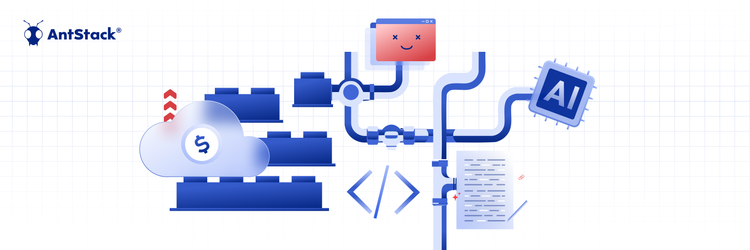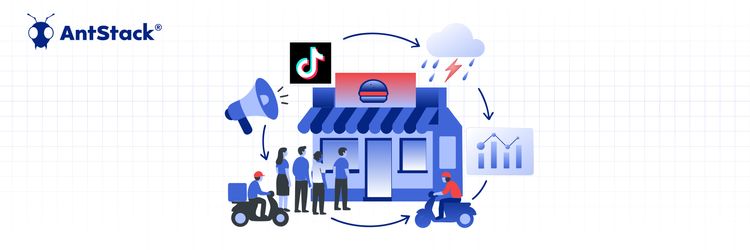From Metadata to Monetization: Building Real-Time Pipelines with Serverless AI
Drug discovery has always pushed the limits of science, but today, it’s the data and infrastructure holding things back. As clinical trials scale, genomics expands, and AI enters the lab, R&D teams are hitting the ceiling of what legacy systems can handle.
Data engineering experts at Anstack, having been there and done that, have curated 5 bottlenecks that can be turned around to drive breakthroughs. Here, we will highlight how adopting a serverless-first approach helps pharma organizations in the context of data engineering.
1. Managing Massive Datasets for Clinical Trials and Genomics
In the world of drug discovery, genomics data is one of the heaviest hitters. Analyzing vast datasets, such as FASTQ and VCF files, can be a monumental task. A single genome can reach up to 40 GB, and with large-scale clinical trials generating petabytes of data, traditional infrastructures often break down under the strain. Not only does this create processing delays, but it also leads to skyrocketing costs for storage and compute resources.
Solution
With serverless computing, you can manage this massive data inflow effortlessly by providing dynamic scaling and elastic compute resources. Services like AWS Lambda and Amazon S3 process genomics data in real-time, scaling resources as needed without the burden of maintaining physical infrastructure.
2. Scalable Data Engineering Pipelines for Healthcare R&D
Modern drug discovery runs on compute-heavy, data-intensive workflows, whether it’s protein folding simulations, molecular docking, image processing, or next-gen sequencing analysis. These require serious computational power and agile pipelines that can handle parallel processing at scale.
But most R&D teams still run into a familiar wall: aging GPU clusters, inflexible on-prem systems, and job queues that bottleneck critical experiments. Scaling becomes a game of procurement delays and budget approvals.
Solution
Services like AWS Batch, Lambda, and Fargate, pipelines can auto-scale based on workload, spin up thousands of containers for molecular screening or simulate protein-ligand interactions on-demand without provisioning a single server. Data flows through the pipeline as events trigger the next stage.
Bristol Myers Squibb maximized productivity and scale with High-Performance Computing and cryo-EM using AWS. By building a highly optimized architecture, they successfully navigated aging GPU, constrained data center availability, and the lack of elasticity faced when running these computationally intensive workflows on-prem.
3. Secure and Compliant Data Storage Solutions
Genomic sequences, clinical trial records, and patient diagnostics don’t just need to be stored but also sealed, traceable, and retrievable with precision. They’re sensitive, regulated assets, often under the scrutiny of HIPAA, GDPR, and NIH data-sharing mandates.
Yet, many organizations still rely on legacy storage systems that often lack visibility, fine-grained access control, or proper data provenance. These gaps pose risks, slow down regulatory audits, and increase overhead for compliance management.
Solution
Serverless tools like AWS Glue and Redshift Serverless ensure that every step of your data pipeline is encrypted, traceable, and reproducible. With API Gateway and GraphQL, access is tightly controlled and logged, so you can easily apply role-based permissions and prove compliance.
4. Accelerating Drug Discovery with AI-Driven Analytics
In every drug discovery, researchers have to navigate a complex landscape of solvents, reagents, catalysts, and environmental factors. Often, they rely on trial-and-error to identify the optimal conditions, which is not only time-consuming but also expensive, especially with unstructured data.
AI offers a smart way forward. It can analyze massive datasets and predict ideal conditions for synthesizing new compounds.
Solution
By integrating AI models with serverless architecture, drug discovery becomes much more efficient.
This is exactly what Bayer did. They trained generative AI models on organic reaction datasets using Amazon SageMaker to predict chemical reaction conditions with remarkable accuracy.
Serverless makes these AI tools more accessible by handling the heavy lifting without the need for dedicated infrastructure. Tools like AWS Glue help clean and prep massive chemical datasets, Redshift enables fast querying and data warehousing, and Lambda functions orchestrate model workflows without persistent computation.
5. Processing Complex Research Data Efficiently
Research data is often complex, spanning multiple formats and sources, and data volumes quickly scale into terabytes.
On top of that, integrating clinical data with genomic data is essential for identifying new drug targets, but it’s a slow and error-prone process when the infrastructure isn't equipped to handle it. With legacy database systems research teams are left with data silos, manual consolidation, and long processing times, all of which delay critical insights.
Solution
Serverless helps pharma overcome this complexity. Services like AWS Lambda, Step Functions, and serverless ETL pipelines powered by Glue and Redshift enable dynamic, on-demand processing without the burden of provisioning or maintaining servers.
Leading medical research institutes have implemented AWS Lambda to seamlessly merge and query large datasets without the headaches of managing complex infrastructure.
To Conclude
The hurdles in drug discovery don’t just come from the science, but from the systems meant to support it. Disconnected data sources, long processing cycles, and inflexible infrastructure slow teams down.
The adoption of serverless computing removes those limits. It scales with your experiments, automates the heavy lifting, and gives researchers more time to focus on discovery instead of data plumbing.
We've seen this shift streamline pipelines, cut costs, and accelerate timelines, without adding infrastructure overhead. AntStack brings the expertise to make that shift real, modernizing your infrastructure with what you need so it works with the pace and precision of what your R&D demands.










